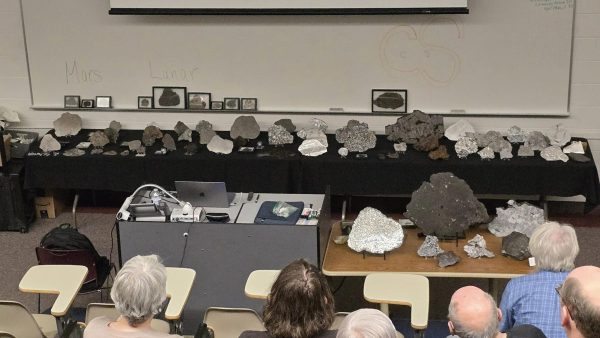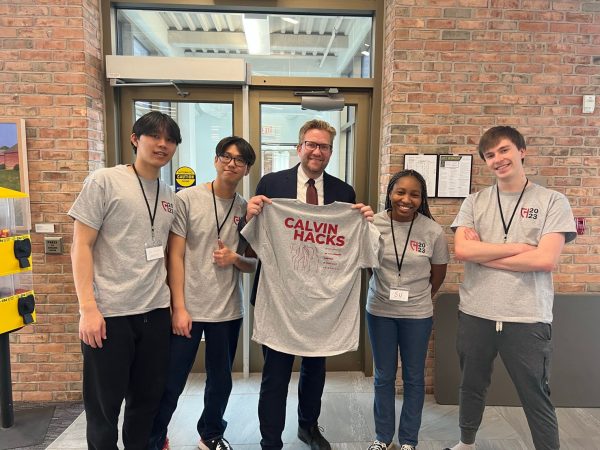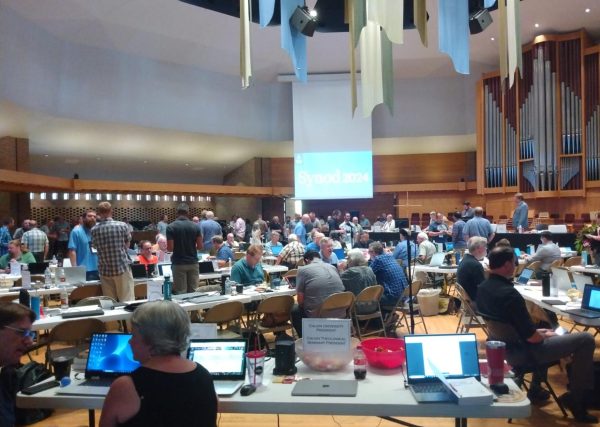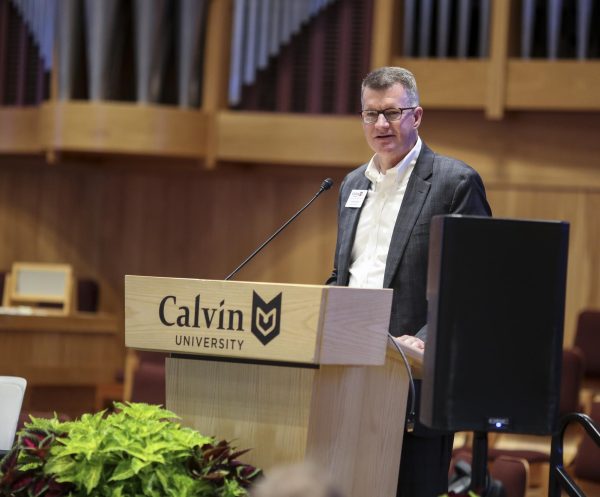Engineering professor aims to start conversations about gender diversity in male-dominated field with new book
Engineering gender percentage by year (data from Gayle Ermer)
Jennifer VanAntwerp, professor of chemical engineering, recently launched a new, co-authored, book called “Sex, Gender, and Engineering: Harassment at Work and in School.” The book aims to bring awareness to harassment in engineering and promote gender diversity.
Though efforts to improve gender ratios in STEM fields have helped start to close the gap in some areas of higher education, Calvin’s engineering department — and the engineering field as a whole — remains disproportionately male.
The field has historically been dominated by men, and, according to Ermer, Workday data shows that 79 percent of all Calvin engineering students are male while just 21 percent are female. The percentage does vary depending on concentration, with the percentage of female students being highest in chemical engineering, according to VanAntwerp.
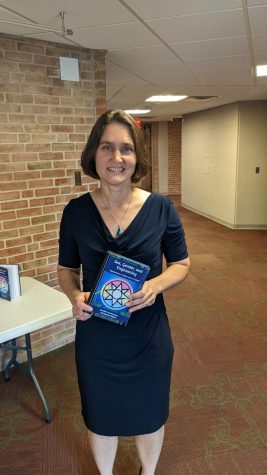
The inspiration behind the book
When VanAntwerp and coauthor Denise Wilson, an electrical and computer engineering professor at the University of Washington in Seattle, decided to write a book on women in engineering, they never expected it to take the direction it ultimately did.
They had expected to write a book celebrating women in engineering. Before highlighting the benefits, however, VanAntwerp and Wilson realized they first needed to acknowledge the issues that remain in engineering. According to VanAntwerp, harassment in engineering workplaces is a persistent obstacle to progress. “You can do all the right things in terms of diversity, equity and inclusion initiatives, but if there is sexual harassment you are not really making any progress,” VanAntwerp said.
Sexual harassment awareness
In 2017, the “Me Too” movement — spurred by the Harvey Weinstein scandal concerning sexual harassment in the film industry — started a global conversation about workplace harassment. It also shaped the direction VanAntwerp and Wilson’s book was going to take. Digging into the data, they found that rates of sexual harassment were relatively high in fields like government and film and relatively low in fields like engineering.
But both professors had their suspicions about the data, especially Wilson. “She felt like the field of engineering just was ignoring the whole issue of harassment … There was just no change happening in engineering, and so she was really motivated to kind of delve into it,” VanAntwerp said.
Research shows that when that kind of what we call ‘less serious behavior’ is persistent … the impact on the person psychologically, physically and career-wise is just as bad as some of those more severe assault cases.
— Jennifer VanAntwerp
Though the term harassment is often associated with its most severe connotations, VanAntwerp sees even less severe acts, if left unchecked, as capable of producing harmful results. “It’s the sexually inappropriate behavior — the sexist jokes, the crude looks, all those things … Research shows that when that kind of what we call ‘less serious behavior’ is persistent … the impact on the person psychologically, physically and career-wise is just as bad as some of those more severe assault cases,” VanAntwerp said.
The need for diversity in engineering
VanAntwerp said the book aims to increase sexual harassment awareness in the engineering workplace and to emphasize the importance of a diverse workplace. “It’s been proven again and again that a more diverse workforce or team creates more and more creative and better ideas. …the company performs better financially [too],” she said.
Gayle Ermer, chair of the engineering department, told Chimes that diversity does increase the innovation and creativity of a workplace. To Ermer, pursuing gender diversity is also part of seeking justice. “Engineering careers are really good careers; they pay well, they’re challenging, they are interesting. … If there is some type of barrier that is preventing women from getting access to such careers, then that is not fair, and we would want to take down those barriers,” Ermer said.
Engineering products contain the biases of the engineers, and if the environment became more diverse, both in gender and race, those biases could be better combated.
— Netsanet Waal
Netsanet Waal, a junior studying chemical engineering, said a more diverse engineering field would have positive results that expand outside of the field. “Making the engineering field more diverse is beneficial to not only the engineers but also the consumers,” Waal said. More diversity of thought will “combat issues within technology, such as policing AI racially profiling black men or cars being engineered to be safest for men,” according to Waal. “Engineering products contain the biases of the engineers, and if the environment became more diverse, both in gender and race, those biases could be better combated.”
It is up to all engineers, present and future, to invoke the change.
— Anna Giboney
Anna Giboney, a senior studying mechanical engineering, said plenty of work remains. “The field of engineering prides itself on innovation and creativity.” Even though the need for diversity of thought is recognized, too often, “this is only focused on the product of engineering instead of the working environment itself … It is up to all engineers, present and future, to invoke the change,” Giboney said.
That’s the hope VanAntwerp and Wilson have for their book — to start a much-needed dialogue in the engineering field aimed at creating a healthier environment for all, inside and outside of the field.





